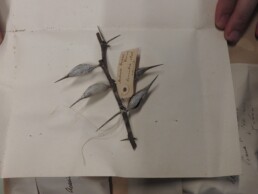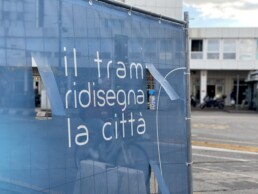ThiMa - Things that Matter: Mobility and Agency of Everyday Objects in Late Medieval Italy
ThiMa - Things that Matter: Mobility and Agency of Everyday Objects in Late Medieval Italy
MSCA project (September 2025 –August 2027) supervised by Isabelle Chabot: Università degli Studi di Padova, Department of Historical and Geographic Sciences and the Ancient World (DiSSGeA), supported by the MoHu Centre and MobiLab (Call ID: HORIZON-MSCA-2023-PF-01 - Grant Agreement n. 101154204)
ThiMa challenges the assumption that action is a human prerogative by examining how everyday objects served as agents of transformation in late medieval societies. Investigating the boundary between material and human agency is particularly critical for the present, where new artificial intelligences call into question the very essence of being human. ThiMa reflects on these matters from another watershed moment in the redefinition of European material culture. Between the fourteenth and fifteenth centuries, everyday goods diversified and there was a significant increase of objects in circulation. This period can thus serve as a crucial laboratory to explore the impact of ordinary things on people’s social behaviour and emotional life. For the first time, ThiMa examines objects as agents that interacted with individuals, mediating social relationships and moving emotions, (ways of) thinking, and perceptions through their peculiar material language.
To investigate these questions, this project employs a bold new comparative framework in the richly documented but diverse environments of Tuscany and Sicily. This critical move away from siloed approaches to material culture allows us to better understand how socio-economic, institutional, and legal contexts influenced the complex relationship between human and things. The project interrogates a broad range of textual and material sources, using quantitative and qualitative methods, cutting-edge digital tools and drawing on a ground-breaking theoretical framework on material agency. Thanks to this novel approach, ThiMa will profoundly advance our understanding of how humans perceive and interact with their material environment from the medieval past to the present day.
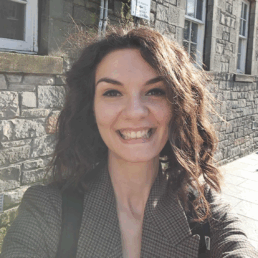
Oggetti agenti: Culture e pratiche materiali nel Medioevo e Rinascimento
(De)colonial Resonances in the Mediterranean Basin: Botanical Collections, Tourism, and Territories on the Move
(De)colonial Resonances in the Mediterranean Basin: Botanical Collections, Tourism, and Territories on the Move
“Mobilities” DiSSGeA Department Development Project (PSD 2025-2027)
The intertwining of narratives generated since the 19th century by the intense mobility of objects, people, as well as theories and worldviews across the Mediterranean basin now takes shape in the form of collections, architecture, landscapes, tourist itineraries, and various forms of territorial development and enhancement.
Museums incorporate these “resonances”—particularly of a colonial nature—into their gestures and conservation practices. Today, they are increasingly rethinking the processes through which objects and people have circulated. As drivers of social change, museums continue to shape the relationship between colonialism, sustainable development of local communities, and responsible tourism.
With the aim of strengthening existing research lines within MoHu, MobiLab, and the Botanical Museum of the University of Padua, and initiating new ones, the project investigates the relationship between the mobility of museum collections—particularly botanical ones—and the various forms of Italian colonialism in Africa (specifically in Libya, Ethiopia, and Eritrea) between the 19th and 20th centuries. It brings together disciplines with diverse methodological approaches, ranging from the material history of science to cultural anthropology, from mobility studies to the critical geography of tourism.
Principal Investigator: Luca Tonetti
Members: Elena Canadelli, Maria Teresa Milicia, Chiara Rabbiosi, Tiziana N. Beltrame, Marco Orlandi, Claudia Addabbo, Paola Bernadette Di Lieto, Valentina Boscariol.
External Collaborators:
- Yota Batsaki, Plant Humanities Initiative, Dumbarton Oaks;
- Felix Driver, Department of Geography, The Royal Holloway Centre for the GeoHumanities;
- Andreas Weber, Knowledge, Transformations & Society (KiTeS) Research group, University of Twente.
Contact & More Information:
For further details, please contact Luca Tonetti at luca.tonetti@unipd.it
The project will develop along four main lines:
- Botanical explorations in the Mediterranean through the herbaria of the Botanical Museum: the network of Achille Forti and Alessandro Trotter;
- Journeys of women botanists in Italian colonial Africa: the Libyan specimens of Silvia Zenari;
- The construction of the colonial popular imagination around “exotic flora”;
- The colonial roots of contemporary tourism.
This project is carried out in dialogue with other ongoing projects, including:
- Museum objects in movement, coordinated by Elena Canadelli;
- Herbaria on the move between history and botany: Exploring scientific, political, and cultural narratives through Achille Forti’s botanical collections (1878-1937), postdoctoral research by Claudia Addabbo, supervised by Elena Canadelli;
- the international project Materials and Spaces for Biodiversity: Digital Histories of Natural History Collections, funded by the Italo-German Centre Villa Vigoni (with the collaboration of the Muséum national d’Histoire naturelle in Paris, the Museum für Naturkunde in Berlin, and the Naturalis Biodiversity Center in Leiden). The initiative focuses on the role of the humanities and social sciences in the study of natural history collections.
Principal Investigator:
Luca Tonetti
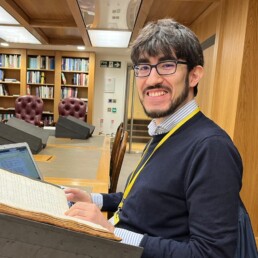
Members
Elena Canadelli
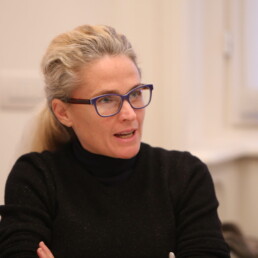
Maria Teresa Milicia

Chiara Rabbiosi

Tiziana N. Beltrame
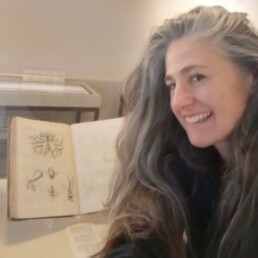
Marco Orlandi
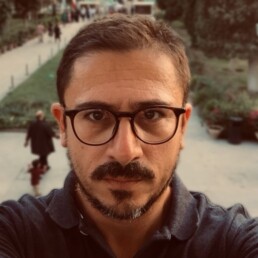
Claudia Addabbo
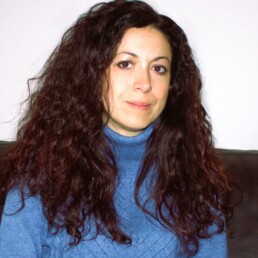
Paola Bernadette Di Lieto
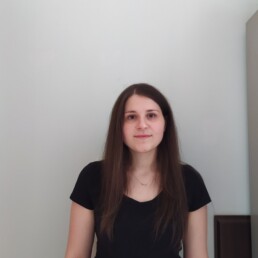
Valentina Boscariol

Infrastructure Humanities | Korean-led project (2025-2031)
Infrastructure Humanities | Korean-led project (2025-2031)
This project is carried out by Korean co-PIs from the Academy of Mobility Humanities at Konkuk University, with In-Seop Shin as leading PI, in collaboration with international co-PIs: Peter Adey (CGH), Peter Merriman (CeTraM), Lynne Pearce (CeMoRe), Paul Rabé (IIAS), and Tania Rossetto (MoHu). The project was awarded to Konkuk University in response to a call from the National Research Foundation of Korea.
Infrastructure Humanities is an agenda that enhances and broadens the scope of mobility humanities research, developed over the past seven years by the Academy of Mobility Humanities (AMH) at Konkuk University (Seoul). It initiates thinking about infrastructures as (im)material actants that shape and condition mobilities. Specifically, Infrastructure Humanities recognizes infrastructure as the essential determinant of human existence and a vital object of study for understanding humanity.
The infrastructural turn in humanities challenges us to reconsider infrastructure not as an external means or methods to human existence, but rather as an actant that constitutes human lives internally. It thus encourages us to understand individuals, societies, and, as their territory, the Earth itself, as ‘entities-being-with infrastructure.’ Contrary to the fetishization of infrastructure that often leads to the apocalyptic projections of the future, Infrastructure Humanities—by thinking of humans with and through infrastructure—investigates emergent practical ethics aimed at reconfiguring the relationship between humans and (im)material infrastructures in more sustainable forms.
Moreover, Infrastructure Humanities seeks to establish an international research model for infrastructure studies, building a global collaborative research platform from the humanities perspective. This research program facilitates cooperation and mutual exchanges at the grassroots level, both locally and globally. Such collaboration is necessary for addressing the infrastructure-induced polycrisis: tackling crises related to infrastructures across scales —individual, social, and planetary —requires a shared understanding of the problems among citizens, corporations, academia, governments, and international organizations. To this end, Infrastructure Humanities seeks to develop a global ecosystem for infrastructure humanities research.

Textu(r)al Urban Mobilities: Cities | Objects | Narrations
Textu(r)al Urban Mobilities: Cities | Objects | Narrations
“Mobilities” DiSSGeA Department Development Project (PSD 2025-2027)
Using a very common metaphor, we could say that the city is a text put in motion by diverse human and non-human agents. Urban mobilities are conveyed through discourses, texts, and narratives of various kinds. The city can therefore be seen as a rich interweaving of textual forms, which compose an extremely articulated fabric that contributes to shaping mobilities in the past, present, and future. Adopting a textual approach to the urban means also considering cities as communication devices and environments, semantic containers, sets of signs that produce meaning, have symbolic and performative powers. In this immaterial layer there is always an implied agency of materials, objects, and things that compose and animate urban life and interact with textualisation processes.
In recent years, literary urban studies, in addition to investigating literary works dedicated to cities, have worked to expand their field of action by interpreting the complex of contemporary urban phenomena through the broader filter of narrative and text. Moreover, according to a geosemiotic and a design-oriented approach, the city is not only mediated by texts of various kinds but is itself a text as a material support in which a considerable amount of signs is inscribed. Drawing inspiration from these and other developments in research within the well established field of ‘cities and/as texts’, the project focuses on urban mobilities as an area particularly interested in the interweaving of narratives and objects, texts and non-human entities, meanings and things.
This allows for the adoption of multiple theoretical perspectives, including object-oriented philosophies, enactivist approaches to narratives, mobilities design, new materialisms, future studies, infrastructure studies, literary urban research, urban history and urban geography. The dialogue implemented between scholars from different backgrounds and the organized activities will also allow for a methodological exchange, which will include mobile and creative methodologies, close reading, discourse analysis, embodied ethnography, archival research on urban environments, among others.
Main activities:
- Participation in the T2M (International Association for the History of Transport, Traffic and Mobility) Conference held in Eindhoven (NL) 4-7 November 2025 with a MoHu panel titled “Reading, enacting, and prospecting alternative mobilities: cities, texts and materialities”.
- Organization of a scientific event at our MoHu centre in Padua to be held in early 2026 (February) with some invitations of scholars who are connected with the MoHu through existing formal partnerships. The event will not only host such main partners but will also involve early career Dissgea scholars (PhD and postdoc) as well as Dissgea students, by hosting a Poster Session open to final dissertation projects and other works by MA students of Dissgea working on conference-related themes.
External Participants & Partnerships:
Simone Fari, University of Granada, MoHu past visiting
Ole B. Jensen, Aalborg University, MoHu honorary member and past visiting
CRPM (Centre de recherches pluridisciplinaires et multilingues) ESPACE, DÉPLACEMENT, MOBILITÉ GROUP based at UNIVERSITÉ PARIS NANTERRE. Referents: Lucia Quaquarelli and Adrien Frenay
MOBILITIES IN LITERATURE AND CULTURE RESEARCH CENTRE based at the UNIVERSITY OF SURREY. Referent: Gabriele Lazzari
FRINGE URBAN NARRATIVES research network, based at the UNIVERSITAT AUTÒNOMA DE BARCELONA. Referent: Patricia Garcia
Principal investigator:
Tania Rossetto
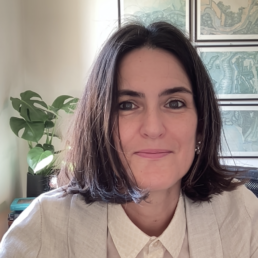
Members:
Enrico Valseriati
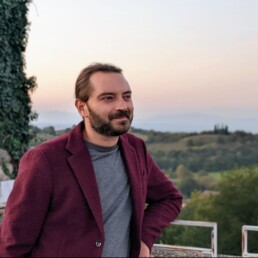
Giada Peterle

Margherita Cisani
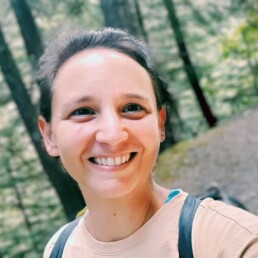
Laura Lo Presti
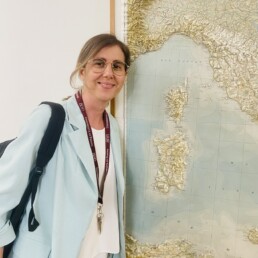
Giuseppe Tomasella
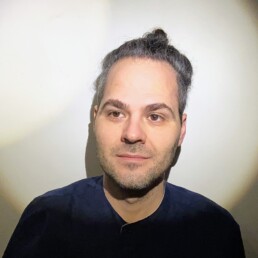
Francesco Zuccolo

The wounded lion: a geospatial analysis of the British defeat by the Zulu at Isandlwana, South Africa (22 January 1879)
The wounded lion: a geospatial analysis of the British defeat by the Zulu at Isandlwana, South Africa (22 January 1879)
“Mobilities” DiSSGeA Department Development Project (PSD 2025-2027)
This joint research project, conducted by the University of Padua (DiSSGEA) and the University of South Africa’s Department of Geography (Pretoria), centers on the pivotal Battle of Isandlwana (1879). The primary scientific goal is to understand and quantify the influence of the geomorphological context on military mobilities, the spatial dynamics and ultimate outcome of the battle, integrating historical analysis with advanced geospatial data.
The program employs a multidisciplinary methodology that combines historical-archival research, on-site geomorphological surveys, high-resolution data acquisition via drones (orthophotos, DTM), and geomagnetic investigations to identify subsurface anomalies. All collected data will be processed and integrated within a GIS environment. Beyond its scientific aims, this project holds significant strategic importance, presenting a concrete opportunity to establish a lasting and fruitful relationship between the University of Padua and the University of South Africa, laying the groundwork for future academic agreements.
Key scientific objectives
The project aims to achieve the following primary scientific objectives:
- to analyze and quantify how the specific geomorphological features of the Isandlwana site (slopes, landforms, hydrography, surface lithology) conditioned the tactical choices, troop movements, lines of sight, and the final result of the battle.
- to integrate historical sources with high-resolution geospatial data to produce a more accurate, georeferenced reconstruction of the phases, deployments, and key events of the battle within its physical context.
- to use non-invasive geophysical methods (magnetometry) to locate and characterize anomalies indicative of archaeological remains related to the battle (metal artifacts, possible structures, burial areas) and to interpret this evidence within its historical and environmental framework.
- to test and refine a multidisciplinary methodological approach that effectively combines historical analysis, geomorphology, remote sensing, and geophysics for the complex study of battlefield landscapes.
- to provide a more holistic understanding of the battle by fully embedding it in its physical and environmental context, assessing the interactions between military events and landscape features.
Expected outcomes & verifiable deliverables
The project is set to produce a range of concrete deliverables:
- detailed geomorphological cartography of the Isandlwana site.
- georeferenced historical-military cartography illustrating the battle’s progression within the terrain’s context.
- high-resolution 3D terrain models and orthomosaics derived from drone surveys.
- maps of geomagnetic anomalies that potentially indicate archaeological remains.
- an integrated geospatial database (GIS).
- scientific publications in international journals and presentations at academic conferences.
Principal Investigator:
Aldino Bondesan (University of Padua)

Members:
Maria Petriccione

Leonardo Mora

Hennie Smit


Connections. Arts and Humanities for Just Mobility Futures | Book
Connections. Arts and Humanities for Just Mobility Futures | Book
Connections. Arts and Humanities for Just Mobility Futures is an open-access publication in three languages (English, Italian, and Korean) authored by Peter Adey, Jinhyoung Lee, Peter Merriman, Lynne Pearce, Veronica della Dora, Sasha Engelmann, Simone Gigliotti, Harriet Hawkins, Jooyoung Kim, Taehee Kim, Giada Peterle and Tania Rossetto. The book emerged as a joint reflection based on years of networking activities carried out among various partners in the UK (Lancaster University Centre for Mobilities Research, Royal Holloway University of London Centre for the GeoHumanities, Aberystwyth University Centre for Transport and Mobility) and South Korea (Konkuk University Academy of Mobility Humanities).
The book is a product of both UK and South Korean research grants. The UK grant was funded by the Economic and Social Research Council (ESRC) and Arts and Humanities Research Council (AHRC) through a UKRI UK-South Korea Social Science and Humanities Connections Grant, part of UKRI’s Fund for International Cooperation (FIC). This project was titled “Connecting Mobilities Research between the UK and South Korea: narrating, mobilising, experimenting and engaging mobilities for just futures” (reference: ES/W010895/1), and involved investigators based in the Royal Holloway University of London and Royal Botanic Gardens, Kew, Aberystwyth University, Lancaster University, and Konkuk University. The team also received funding from KNRF’s Humanities Korea + (HK+) programme (reference: NRF-2018S1A6A3A03043497), in conjunction with a Korean research grant “Mobility Humanities based on the Coevolution of Human being and Technologies”. The Italian translation was funded by the UK grant and carried out by Giuseppe Tomasella for the MoHu Centre.
The Centre for Advanced Studies in Mobility and the Humanities (MoHu) has emerged as a travel companion on this journey, creating further connections and triangulations that have enriched and added nuances to the mobility and humanities binomial. Director Tania Rossetto particularly wishes to thank all her colleagues at the Centre, as well as the past director, Andrea Caracausi, for their collegial work in organising and animating events, conferences, seminars, publications, and meetings with colleagues from Royal Holloway, Aberystwyth, Lancaster, and Konkuk. In particular, thanks to the MoHu’s support, it was possible for the Paduan delegation – including Giada Peterle, Margherita Cisani, Laura Lo Presti, Chiara Rabbiosi, Paola Molino, Marco Bertilorenzi, Lucio Biasiori and Federico Mazzini – to meet colleagues at several venues in Italy, the UK and Seoul.
From the Introduction:
“This book is interested in connection and connecting our approaches and ideas of mobility. It is interested in these issues, however, in quite a specific way. On one hand, it seeks to make sense of connections between old and emerging concepts and approaches towards mobility that are more sensitive and open to the ethos, methods and practices of research from the arts and humanities. […] On the other hand, the book acknowledges the imperative to direct these new and emerging encounters and connections between mobilities and the arts and humanities towards more equitable, just and sustainable mobility futures, even as it pushes against the constraints and challenges of a neoliberal academy. For mobility arts and humanities cannot operate in a vacuum but simultaneously realises the constitutive role of mobility in the pressing social, political, economic and environment crises of our time, now, and in the future, and what has come before”

Research on the move | Bi-Lateral Workshop MoHu & EUI
Research on the move | Bi-Lateral Workshop MoHu & EUI
Overview
“Research on the Move. A Bi-lateral Workshop between Padua and Florence” is a project based on a series of seminars to be held at the European University Institute (EUI) – Department of History and Civilisation (HEC) on 30 April 2025 and in Padua at the Centre for Advanced Studies in Mobility & Humanities (MoHu) on 12 June 2025, organised by the Migration and Mobility Working Group of the European University Institute and the MA Programme in Mobility Studies of the University of Padova.
The event invites PhD students from the HEC department at the EUI, as well as advanced Masters students and PhD students from the MA Mobility Studies and PhD programme in Historical, Geographical and Anthropological Studies at the Universities of Padua and Venice Ca’ Foscari, to present and discuss their ongoing projects on various aspects of the history of mobility and migration. The workshop will provide advanced Masters students and PhD students with a forum for academic discussion and additional external feedback on their work. It will also provide an opportunity for networking between two leading research centres in the field of the history of mobility and for promoting the PhD programmes, in particular to Master’s students.
The project series
The project includes a series of events organised by the Migration and Mobility Working Group of the HEC Department and the MoHu in the first half of 2025:
(1) A lecture on 30 January 2025 by Paola Molino, Professor of Early Modern History and Coordinator of the MA in Mobility Studies.
(2) The official participation of two members of the working group in the Mobility Fest, where they presented the working group and promoted the EUI PhD programme (21 February 2025).
(3) Two workshops (30 April and 12 June 2025): During the workshops, panels are moderated by members of the working groups from the two institutions. Commentators provide feedback to stimulate discussion and intellectual exchange between participants.
Organisers
Anna Breidenbach (2nd Year)
Niklas Platzer (2nd Year)
Supported by Benno Gammerl, Paola Molino, Carlotta Sorba
Participants to the first workshop in Florence:
Anna Breidenbach (EUI), Daniele Cal (EUI), Emma dal Mas (EUI), Thays De Souza Ellero (Mobility Studies), Lydia Hendriksma (EUI), Aleksandr Lemeshinski (EUI), Alena Lesniak (Mobility Studies), Chukwudi Matthew Anuforo (Mobility Studies), Midya Navidi (Mobility Studies), Maria Pantazi (EUI), Niklas Platzer (EUI), Fabian Riesinger (EUI), Hasan Sezer (Mobility Studies), Ginevra Villani (PhD Padua-Venice), Mikhail Vsemirnov (PhD Padua-Venice).
SAIL - Sicilians dreAmIng Louisiana: Agents of Migration and Labour Recruiters on the Palermo-New Orleans Route (1865-1901)
SAIL - Sicilians dreAmIng Louisiana: Agents of Migration and Labour Recruiters on the Palermo-New Orleans Route (1865-1901)
MSCA project (Sept 2024 –Augt 2026) supervised by Stefano Luconi
Coordinator: Università degli Studi di Padova, Department of Historical and Geographic
Sciences and the Ancient World (DiSSGeA), supported by the MoHu Centre and MobiLab
(Call ID: HORIZON-MSCA-2023-PF-01 - Grant Agreement n. 101149130)
SAIL analyses early migration from Sicily to Louisiana between 1865 and 1901. It sheds light on agents of migration who enrolled peasants in Sicily and on their transnational connections with labour recruiters based in Louisiana, who were looking for a labour force after the abolition of slavery at the end of the US Civil War in 1865. On the other side of the Atlantic, the Italian government considered emigration as an issue to be managed or opposed: the 1901 law restricted the activity of agents of migration, who were regarded as people smugglers and used as a scapegoat to justify migration, rather than being studied as one of the interrelated factors triggering it. This simplistic view permeated the public debate in Italy, has not been challenged by scholarship on Sicilian migration, and resonates with current populist and xenophobic narratives.
SAIL offers the first comprehensive study of early Sicilian migration to Louisiana by adopting an interdisciplinary approach combining social, economic, and cultural history with literature. Thanks to a thorough investigation and cross-referencing of untapped Italian and US archival sources and literary works, SAIL maps the presence of agents of migration in Sicily, analysing their identity, background, methods, organisation, and the transnational connections with labour recruiters in Louisiana, gauging their effectiveness in disseminating a dreaming image of the USA among Sicilian peasants and examining the extent to which their activity impacted the migration flow alongside other factors (economic depression, political turmoil, chain migration, remittances).
SAIL will fill a scholarly gap, develop tools for researching migrations, and reflect on Sicily’s past and its present as one of the main gateways into Europe. Through activities involving academic and non-academic audiences, SAIL will stimulate a debate and raise awareness around one of Europe’s most pressing concerns: safeguarding the right to safe migration.
Know more:
MSCA Fellow:
Alice Gussoni



The mobility of texts: past, present and future
The mobility of texts: past, present and future
“Mobilities” DiSSGeA Department Development Project (PSD 2023-2027)
The research project focuses on the history and future of text and textuality, drawing on scholarship in book history, media and communication studies, and digital history. It takes advantage of the extensive research that has converged at MoHu in recent years to design and implement a teaching program with the Tokyo College on the history and future of the text.
In the summer of 2024, Paola Molino and Federico Mazzini spent two weeks and one month, respectively, at the University of Tokyo, collaborating with Professors Michael Facius and Cintia Vezzani to co-teach the BA course “The Future of the Text.” The central inquiry addressed in this course sought to ascertain whether the “written word,” a concept with a centuries-long history, retains a future within the digital landscape. Contemporary trends, such as the replacement of novels by movies and subsequently video games as the predominant cultural form, the transition from text to audio and video in messenger apps and social media platforms, a concomitant loss of concentration and focus, and declining rates of functional literacy in many developed countries, appear to suggest a negative answer to this question. This is further compounded by the fact that, just a year after the emergence of major language models like ChatGPT, artificial intelligence has already begun to perform a significant amount of reading and writing on our behalf. In this interdisciplinary course, we approached these trends not as absolute truths, but as a point of departure to explore the intricate relationship between literacy, media, and society through a comparative lens. We examined long-term trends in diverse textual media, the evolution of technologies from the printing press to social media platforms, and the social contexts of reading and literacy. This enabled us to contemplate past, present, and future trajectories of textuality.
The subsequent phase of the project entails the execution of the Summer School “The Future of the Text” (June 16-20, 2025), which will be hosted at the Center for Advanced Studies in Mobility and Humanities in Padua and is supported by the Universities of Padua and Tokyo. The Summer School aspires to delve into the historical progression of textual practices and technologies, providing insights and stimulating debates on the present and future of texts. The program will feature a series of traditional lectures on the history of the book, digital history, the mobility of texts and maps, and the challenges of writing English texts in the era of AI. These lectures will be complemented by hands-on workshops in libraries, museums, and exhibitions in Padua and Venice. The Summer School will be offered to international postgraduate students from Padua and Tokyo. It will be a collaborative effort, with instruction provided by Paola Molino, Federico Mazzini, and two colleagues from the University of Tokyo, Michael Facius and Naoko Shimazu. Further details regarding the Summer School, including the call for applications, will be made available on this website by mid-February 2025.
Co-Principal Investigators:
Paola Molino
Federico Mazzini



Herbaria on the move between history and botany: exploring scientific, political, and cultural narratives through Achille Forti's botanical collections (1878-1937)
Herbaria on the move between history and botany: exploring scientific, political, and cultural narratives through Achille Forti's botanical collections (1878-1937)
Postdoctoral project supervised by Elena Canadelli (Dec 2024-Nov 2026)
Project in collaboration with the Botanical Garden of the University of Padua (Prof. Tomas Morosinotto), the Department of Geography of The Royal Holloway Centre for the GeoHumanities (Prof. Felix Driver), the Italian Central Herbarium (Dott. Lorenzo Cecchi), the Natural History Museum of Verona (Prof. Luca Ciancio, Dott. Leonardo Latella), the Museo Galileo - Istituto e Museo di Storia della Scienza, Florence.
Postdoctoral researcher: Claudia Addabbo
This two years research project explores natural history collections and their mobility as interdisciplinary objects, between history, botany and art. The aim is to focus on the figure of the Italian botanist and art collector Achille Forti (1878-1937) and on his considerable Algae Herbarium, today preserved at the Botanical Museum of the University of Padua. It includes around 40,000 specimens of algae from all-over the world, collected by different people and in different scientific expeditions between the nineteenth and the twentieth centuries.
The main objective of the project is to reconstruct the history of the formation of Forti’s Herbarium and to consider its “mobility” in space and time, thanks to an integrated and extensive study of archival material, museological collections and primary literature, in the light of history of science and mobility studies.






